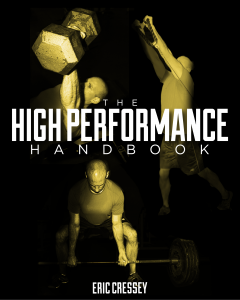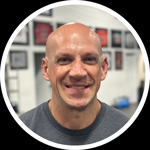
Trust in the System: How Being an Optimist Will Help You in Strength and Conditioning
I’m always trying to learn about things we can find outside the strength and conditioning industry that may in some way benefit the way we coach athletes. I recently finished up the audiobook, The Pursuit of Perfect, by Tal Ben-Shahar, and there was a section that really stood out for me.
It can be quickly summed up with this quote:
“Those with a positive view of old age lived on average more than seven years longer than those with a negative view.”
Immediately, I began thinking about this message’s implications with respect to training progress, coaching approaches, and running a business.
As an eternal optimist, this quote resonated with me. With respect to personal relationships, I joke that I don’t have any enemies; I just have raving fans who are in denial. I do my best to see the good in people and always try to give folks the benefit of the doubt, even if a first impression was less than favorable. In short, I feel like good things happen if you think about good things!
Applying this to the strength and conditioning field, I’ve always said that I want athletes to see training with us as a competitive advantage for them. I want them to know just how meticulous we are in our assessments and programming, and how nobody else takes as much pride in delivering baseball-specific training. I want them to know we’re getting out to do continuing education instead of “getting comfortable;” have developed a great network of everything from pitching coordinators, to physical therapists, to nutrition consultants, to orthopedic surgeons to help them get the best training and care; and have built a system where our training model dictates our business model (not vice versa). I want them to know we’ve fostered an environment where they can train around individuals with similar goals and look forward to training around people who want to “get after it.”
In short, them having an extremely positive view on training with us is vital to their success. If they don’t buy in, they’re starting behind the 8-ball.
“Buy in” doesn’t always happen, though – and it’s for one of two broad reasons:
1. The athletes’ personalities don’t allow it; they’re skeptical of everything.
2. The program simply isn’t worth buying into; the athletes have no confidence in it.
In the first instance, as an example, I’ve actually had a few people request refunds for The High Performance Handbook before even starting the program. Conversely, I’ve had other folks that open up the program and instantly email me about how excited they are to try out some new exercises, or how they’re really excited to finally have some good structure in their training programs.
Which group do you think is going to train harder and with more consistency over the long haul? If you’re questioning a program (or a coach) before you even try it (or him) out, you might as well just stay home. You have to get your mind right before you can get your body right.
There are parallels in the business world, too. When business owners encounter new ideas (especially from other industries) that may be worthwhile to incorporate in their existing structures, many immediately insist, “My business is different; it won’t work for me.” Usually, these are the same business owners who spend their entire professional careers (which are often short-lived, because they go out of business) speaking negatively about their competition, as opposed to emphasizing their own unique strengths. Clients and athletes perceive and dislike pessimism, regardless of the industry.
The “hardcore” evidence-based crowd in the health and human performance industries can trend in this direction, too. They’re often so pessimistic about every new idea because it’s not backed by research that they completely discount anecdotal evidence supporting new ideas. It’s important to remember that everything we understand with research-backed certainty was just a theory supported by anecdotal evidence at one point, though. And, if we wait around for the peer-reviewed literature to “approve” everything we do, we’ll miss out on a lot of beneficial stuff, and the industry will progress at a snail’s pace. Evidence-based practice is tremendously important, but you can’t combine it with unyielding pessimism.
In the second scenario above, some programs and coaches just aren’t very good. And, the problem about delivering a low-quality product is that word spreads much quicker than it does when you do a great job. In our business, if a kid drops a weight plate on his foot, word spreads quickly. If we train 100 pitchers in an off-season and none of them has an arm surgery, though, nobody really hears about it. Building credibility and a confident following of athletes takes time.
I think college strength and conditioning is the best example. We have some athletes who absolutely dread going back to school in September because their programs are the exact same thing every year, and there is no element of individualization. It’s the same old repeatedly-photocopied-program from 1989, plus loads of distance running. They have no confidence in their programs before they even show up because they’ve experienced it first-hand, know its reputation, and are keenly aware of the fact that it hasn’t changed at all.
Conversely, take a college program that wants to do right by their guys with continuous improvement. We often host an Elite Baseball Mentorships at Cressey Sports Performance, and we’ve had strength and conditioning coaches, athletic trainers, and baseball coaches from dozens of top tier D1 schools attend over the years. Many of these coaches go out of their way to tell us just how excited their athletes are to hear that the coaching staff is attending. Seeing their coaches want to get better enhances their confidence in the program. When they return, the athletes get excited when they see new exercises implemented, a new piece of equipment in the weight room, or some updated coaching cues to clean up movement. A dedication to continuous improvement among coaches fosters an environment of optimistic, motivated athletes.
What’s the take home message of this post? Put on a happy face, be open-minded, give people the benefit of the doubt, and try new things. Doing so might not add seven years to your life, but it’ll certainly help you build a life that’s a lot more fun to live.






